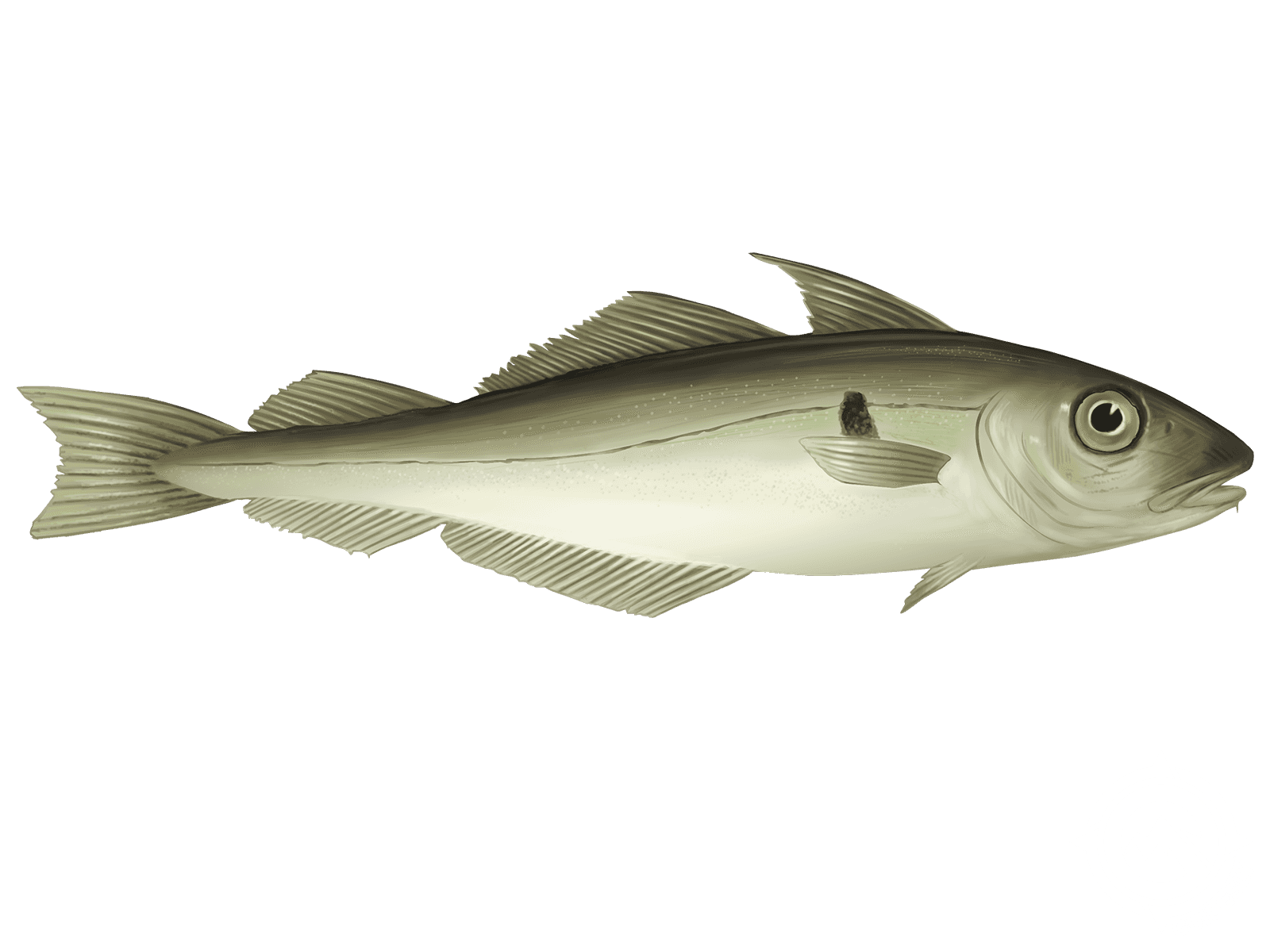Haddock

Species Details
Melanogrammus Aeglefinus
Gadidae
Gadiformes
Onshore, Nearshore, Rocky Bottom
2 - 10 lbs.
14" - 36"
Haddock
Melanogrammus Aeglefinus
Haddock Description
Haddock is a saltwater fish from the order Gadidae and is part of the Cod family. It is a fast-growing saltwater fish species. They are considered important from a commercial point of view, as food, and for hunting and game fishing. Haddock has darker scales on the upper side of the body while lighter scales on the lower. The upper body and sides are purplish-grey; color fades to pinkish near the lower body and ultimately turns to a white belly. Haddock has 3 dorsal fins and 2 anal fins. Haddock is similar to its relatives, such as silver hake, pollock, and especially the cod. Haddock has a black lateral line on the side that differentiates it from the larger cod, along with less mottled body color. They also have a distinguishing black "thumbprint" found on each side of their body.
Haddock Size:
The average length of Haddock is from 14 - 30 inches, but the species can grow larger up to 36 inches. The fish can weigh from 2 - 7 pounds.
Haddock Spawning
The spawning season of Haddock begins in January and is at the peak in spring. Haddock spawn between January and June on Massachusetts' eastern Georges Bank, to the Nantucket Shoals, and along the Maine coast over rocky, gravelly, or sandy bottoms. The female Haddock produces between 850,000 and 3 million eggs. Females release their eggs in batches on the ocean floor, where the male fertilizes them. The fertilized eggs then rise to the surface of the water, where they drift with the currents. Once hatched, they remain near the surface for several months before they settle to the ocean bottom.
Haddock Interesting Facts
Haddock has a black blotch above the pectoral fin, often called the Devil's thumbprint.
Haddock can swim very swiftly for a shorter length to escape their predators. They also travel in large schools.
Haddock is a very popular food fish.
Haddock live for approximately 14 years.
Haddock Diet
Haddock are carnivorous and feed mostly on crabs, snails, worms, sea, urchins, and fish eggs.
Haddock Habitat
Haddock are bottom dwellers and are fond of cold waters. The fish prefer water at a temperature of 36° F to 50° F. They are found over sandy bottoms, pebbles, or broken shells.
Haddock Lures and Baits:
When Haddock fishing, anglers prefer using a baited hook instead of jigs to cause less damage to the fish's mouth and are less likely to attract cod. If drifting baits, using a braided line is wise. Fresh clams, rag-worm, mussels, cockles, squid, shrimps, and crabs are the best baits for Haddock. If choosing a lure, small 5-7 ounce jigs are useful.
Haddock Fishing Method
As the fish lays at the bottom, vertical equipment with heavy weights is a priority. Spinning gears suitable for saltwater and rigging are efficient ways for haddock fishing. A spinning rod of 6wt to 8wt can work for casting baits and lures. A simple tandem haddock rig or two hook paternoster rigs are suitable choices.
Haddock Distribution:
Haddock are found from Newfoundland and Nova Scotia, Canada, to southern New Jersey with the highest concentration in the Gulf of Maine, Massachusetts' Georges Bank, and Cape Cod.
Haddock World Record:
All tackle record of Haddock is 11 pounds, 3 ounces.







